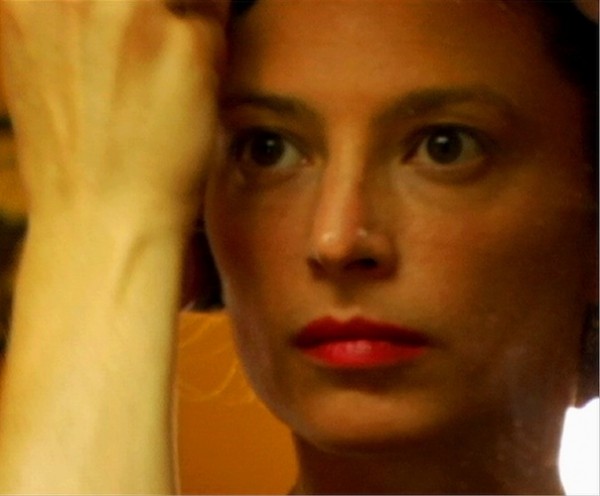Fuse Film Review: “Actress” — When Camera and Subject Are Part of the Act
Brandy Burre is a trained actress who is artfully aware of the camera and its power: the director uses her skill as a performer to animate the film.
Actress, directed by Robert Greene. At the Brattle Theater, Cambridge, MA, through February 11. The DocYard will present a Q&A with the director after the 7 p.m. screening on Monday, February 9.

A scene featuring Brandy Burre in “Actress”
By Tim Jackson
Actress, the new documentary by Robert Greene, chronicles a period in the life of Brandy Burre as she attempts to balance motherhood, domestic partnership, and her need to return to an acting career. Burre, who was featured on 15 episodes of The Wire, has taken a break from acting to raise two young children, Henry and Stella, in Beacon, New York with the children’s father, restaurateur Tim Reinke. As her next-door neighbor, Greene realized she might make a good subject. Actress is, like the director’s previous films, Fake It So Real and Kati with an i, shot in cinéma vérité style, but it is still highly stylized. Rather than coming off as false or manipulative, these bold stylistic choices turn out to be perfect for the woman at the center of the film. Burre is a trained actress who is artfully aware of the camera and its power: the director uses her skill as a performer to animate the film.
The opening shot is telling. We hear a temple bell. Burre stands in her kitchen; she is in a bright red dress and apron. She is washing dishes, her back to the camera. Her head hangs down and she holds glass in a way that looks as if she is about to drop it. In voice over, Burre says: “I was thinking the other day of that scene where I say, ‘I’m a type A and I tend to break things.’ And it just occurred to me, it wasn’t just the character. It was me. I tend to break things.” Then the title comes up.
Green’s portrait of Burre begins at a moment of personal and professional crisis, a creative trigger for a woman for whom life inevitably means giving a performance. While there are many stories of actors confusing real life and ‘acting,’ it is not so common a subject for a documentary. Burre and Breene collaborate using vérité footage of domestic life and professional struggle along with monologues that articulate her frustrations as mother, actress, and domestic partner. Her skills as an actor — an acute sense of self-awareness along with quick access to emotions — can be burden when it comes to adjusting to the mundane tasks of domestic life. Greene complicates the formal texture of the documentary by incorporating slow motion, musical cues, and lovingly staged compositions. He gives Burre a number of close-up confessional moments. Is she is performing or confiding? Who knows, when both camera and subject are putting on an act.
This is not to say Burre is lost in some fantasyland or is hopelessly self-centered. On the contrary, she is a loving mother and a skilled actor with all the insecurity that comes with taking on each role. She is in touch with reality: she admits to being a frustrated and imperfect partner. When Reinke moves out of the house he has good reason, though Greene doesn’t go into the details behind the separation — Reinke is placed on sidelines, as are any of the marital consequences to the children. Burre’s beautiful face, with its sharp angles and watchful eyes, register frustration, sadness, and love in equal measure. Actress is Burre’s compelling one-woman show — Greene’s theatrical flourishes provide a dazzling spotlight.
Tim Jackson is an assistant professor at the New England Institute of Art in the Digital Film and Video Department. His music career in Boston began in the 1970s and includes some 20 groups, many recordings, national and international tours, and contributions to film soundtracks. He studied theater and English as an undergraduate and has also has worked helter skelter as an actor and member of SAG and AFTRA since the 1980s. He has directed a trio of documentaries: Chaos and Order: Making American Theater about the American Repertory Theater, and Radical Jesters, which profiles the practices of 11 interventionist artists and agit-prop performance groups. His third documentary, When Things Go Wrong, about the Boston singer/songwriter Robin Lane, with whom he has worked for 30 years, has just been completed. He is a member of the Boston Society of Film Critics. You can read more of his work on his blog.
